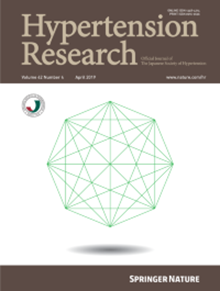矿化皮质激素受体拮抗剂、醛固酮合成酶抑制剂的进化,以及原发性醛固酮增多症的替代治疗方法。
IF 4.3
2区 医学
Q1 PERIPHERAL VASCULAR DISEASE
引用次数: 0
摘要
原发性醛固酮增多症(PA)是一种普遍且可治愈的继发性高血压疾病,占所有高血压病例的5-13%。顽固性高血压、脑、心血管疾病和肾脏并发症在PA患者中的患病率高于原发性高血压患者。早期适当的诊断和治疗可以抑制脑和心血管事件。对原发性高血压患者推荐的生活方式改变,包括饮食盐限制和适当的卡路里摄入以避免脂肪堆积,在抑制矿化皮质激素受体(MR)的过度激活方面起着至关重要的作用,这有助于控制血压和预防终末器官损伤。依沙塞隆是一种安全的矿皮质激素受体拮抗剂(MRA),具有很强的抗高血压和抗蛋白尿作用。醛固酮合成酶抑制剂(Aldosterone synthase inhibitors, ASIs)是一种具有新的作用机制的降压药物。MRAs和ASIs的药理机制不同;MRAs通过阻止醛固酮和/或皮质醇与MR结合来阻断MR活性,而ASIs则阻断肾上腺分泌醛固酮。其他新的治疗方法,如机器人辅助腹腔镜肾上腺切除术、经皮计算机断层扫描射频消融术、经静脉射频导管消融术和超选择性肾上腺动脉栓塞术已经发展起来。进一步的研究将为PA患者提供更好的治疗方法,并减少大脑和心血管事件的发生频率。本文章由计算机程序翻译,如有差异,请以英文原文为准。

Evolution of mineralocorticoid receptor antagonists, aldosterone synthase inhibitors, and alternative treatments for managing primary aldosteronism
Primary aldosteronism (PA) is a prevalent and curable secondary hypertensive disorder that accounts for 5–13% of all hypertension cases. The prevalence of resistant hypertension, cerebral and cardiovascular diseases, and renal complications is higher in PA patients than in those with essential hypertension. Appropriate diagnosis and treatment at an early stage may suppress cerebral and cardiovascular events. Lifestyle modifications recommended for essential hypertensive patients, including dietary salt restriction and appropriate calorie intake to avoid fat accumulation, play a crucial role in suppressing overactivation of the mineralocorticoid receptor (MR), which helps to control blood pressure and prevent end-organ damage. Esaxerenone is a safe mineralocorticoid receptor antagonist (MRA) with strong antihypertensive and anti-albuminuric effects. Aldosterone synthase inhibitors (ASIs) have been developed, which are antihypertensive agents with a new mechanism of action. The pharmacological mechanisms of MRAs and ASIs differ; MRAs block MR activity by preventing aldosterone and/or cortisol from binding to the MR, while ASIs block aldosterone secretion from the adrenal gland. Other new treatments, such as robot-assisted laparoscopic adrenalectomy, percutaneous computed tomography radiofrequency ablation, transvenous radiofrequency catheter ablation, and super-selective adrenal arterial embolization have been developed. Further research will lead to better treatments for PA patients and reduce the frequency of cerebral and cardiovascular events.
求助全文
通过发布文献求助,成功后即可免费获取论文全文。
去求助
来源期刊

Hypertension Research
医学-外周血管病
CiteScore
7.40
自引率
16.70%
发文量
249
审稿时长
3-8 weeks
期刊介绍:
Hypertension Research is the official publication of the Japanese Society of Hypertension. The journal publishes papers reporting original clinical and experimental research that contribute to the advancement of knowledge in the field of hypertension and related cardiovascular diseases. The journal publishes Review Articles, Articles, Correspondence and Comments.
 求助内容:
求助内容: 应助结果提醒方式:
应助结果提醒方式:


